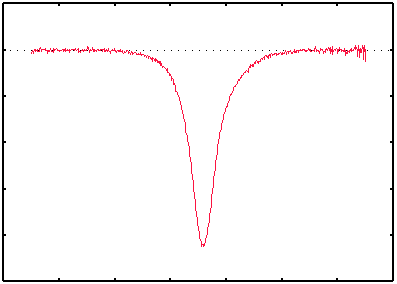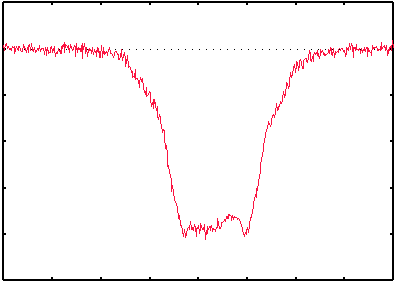A Polarized HD-Target
An ideal spin-polarized target does not contain any unpolarizable nuclei. As H2 undergoes a conversion to its non-magnetic ground state at low temperatures, the so called para-hydrogen, it is not suitable as a target material.
Instead one regards the isotopic forms D2 and especially HD. While the former shows very short relaxation times at 1 Kelvin, the proton spin of the latter relaxes on a scale of weeks using magnetic fields of 2 Tesla.
For the process of Dynamic Nucleon Polarization (DNP), wich means transferring the high amount of natural polarisation from paramagnetic (i.e. unpaired) electrons to the nuclei using microwave irradiation, of course such paramagnetic centers are required. These shall be provided by H-atom radicals wich arise from cracking HD-molecules via irradiation.
Because the hydrogen isotopes have very low melting points (<20K), a special inlet for the Bochum 4He-cryostat is necessary to solidify the gas. In principle this inlet consists of a vacuum isolated tube, wrapped with a heating wire. This ensures the gas not to condense and solidify inside the tube but only inside the cavity. Here, making use of a NMR coil, the magnetic resonance signal can be measured. The principle of Nuclear Magnetic Resonance is used to determine the amount of polarization.


NMR
signals of
75% ortho-H2 above and below
the phase transition at 1.15K.
The low temperature signal on the right exhibits close analogy to
deuteron
signals, where the intrinsic quadrupolar moment interacts with an
electric
field gradient. In this case, however, the splitting of the line is due
to
the intramolecular dipol-dipol interaction of the two protons.
Home
Last updated 03.05.2007
joergh@ep1.rub.de
Home
Last updated 03.05.2007
joergh@ep1.rub.de